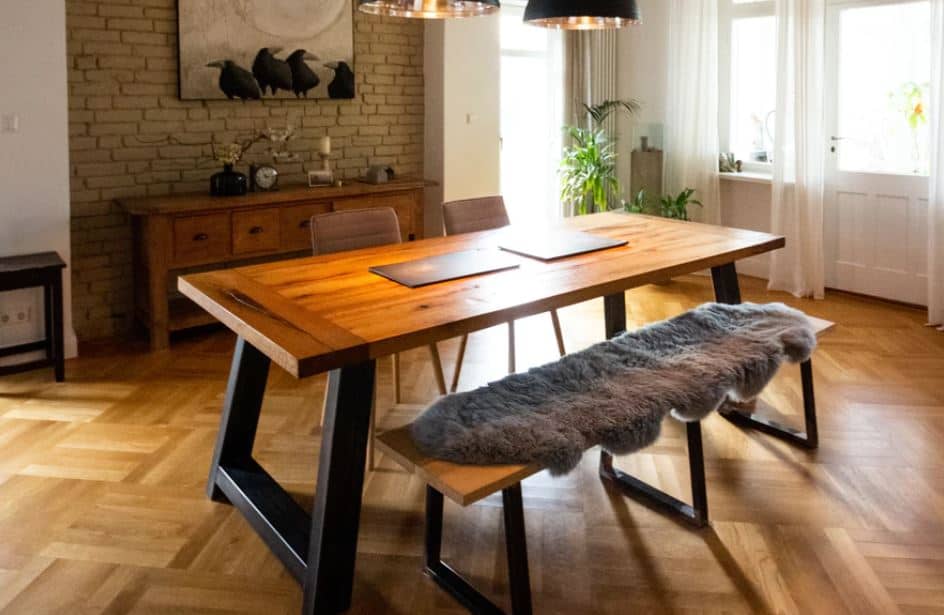
Making the decision on which type of wood flooring is the best for your house can seem like a daunting task. There are over 50 variations of wood flooring available on the market today, not to mention the multitude of color and finish options available, so feeling overwhelmed is understandable.
Types of wood flooring can be broken down first by whether they are solid wood or engineered hardwood prior to even getting to the wood itself. After you have made that decision, the next step is to choose which wood you want your flooring to be made of. Finish colors and installation type are the last decisions to be made.
As you can see, the options are plentiful. If any of the aforementioned choices are confusing, don’t make sense, or you simply don’t know which is best for you, continue reading for a complete breakdown of each decision set.
Types of Wood Flooring Material
The two main options when it comes to the actual composition of the hardwood flooring are solid hardwood and engineered hardwood. Most wood flooring is manufactured with a tongue and groove locking design, making installation a breeze and creating a cohesive unit when all is said and done. We’ll briefly discuss the pros and cons of each below.
Solid Hardwood
Solid Hardwood is exactly as it sounds: a solid cut of wood with a simple stain and protective coating finish on top. Solid hardwood floors can be sanded and refinished multiple times but can wear easier and quicker than engineered hardwood in high traffic areas. An underlayment should always be installed beneath solid hardwood to help protect against moisture.
Due to the porous nature of wood, solid hardwood should not be installed below ground level in areas such as basements or cellars. Water has a much higher chance of creeping into these areas and warping or distorting your hardwood floors. Natural expansion and contraction due to environmental conditions occurs in woods of all types, which we will explain more in-depth below in the installation sections.
Engineered Hardwood
Engineered hardwood floors are made up of solid hardwood compressed into a composite base, like plywood or compressed shavings. Unlike solid hardwoods, engineered hardwoods have a limit on the number of times they can be sanded and refinished because of the composite base.
One of the major benefits of engineered hardwoods is the ability to generate a borderline waterproof product through the use of specific sealants. That said, not all engineered hardwood flooring is considered waterproof, so do your due diligence when shopping around.
Although waterproof engineered hardwood protects against moisture, I still recommend installing a water-repelling underlayment beneath the wood. A lot of the waterproofing underlayment products available on the market today combine padding with the waterproofing elements, so it won’t cost you any additional time on installation.
Types of Wood
Wood flooring is offered in a variety of wood species, each carrying various pros and cons. Other than the physical look of each species of wood, the primary variance is in the hardness, or dent resistance, of the wood itself. In the world of wood flooring, this hardness is measured by a metric called the Janka scale.
The Janka scale measures the force required to embed a .444 inch steel ball into the wood by half its diameter. Put more simply, it measures the dent resistance of species of wood, with a higher score meaning more resistance. Some of the harder woods are so dense that they feel similar to walking on tile, so weigh your own personal pros and cons of harder woods versus softer woods when picking out your flooring.
Maple
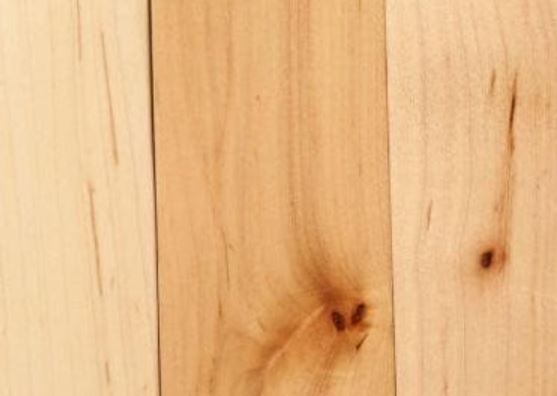
Maple lands right in the middle of the Janka scale with respect to hardness, checking in around a 1500 score. The lighter-colored wood holds up well for areas of high traffic and typically reflects a more traditional wood floor look. Typical color spans the light brown to creamy brown range.
Oak
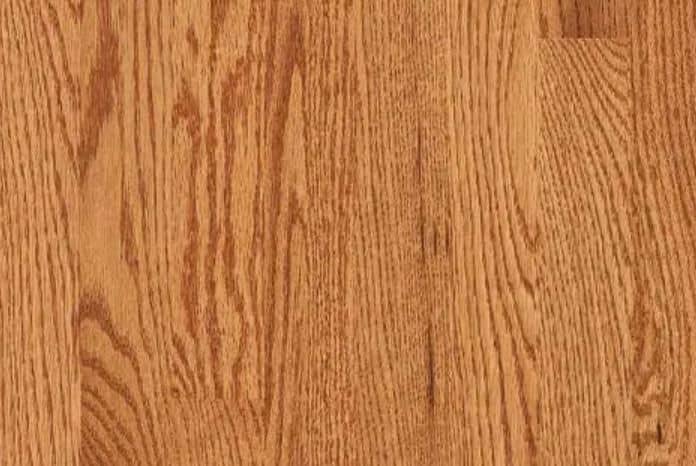
Oak is generally regarded as the most popular hardwood, and comes in either red oak or white oak options. Both red oak and white oak check in around a 1300 score on the Janka scale, indicating a solid mix of hardness and soft touch to walk on. Like maple, oak is a lighter wood and typically is finished to highlight the light color and sprawling grain.
Cherry

The relative softness of cherry flooring is a con that most accept to gain the brilliant reds and dark brown coloring in their homes. Realize that cherry flooring might need to be sanded and refinished more often than harder hardwoods, but the unique coloring helps to offset this requirement.
Hickory
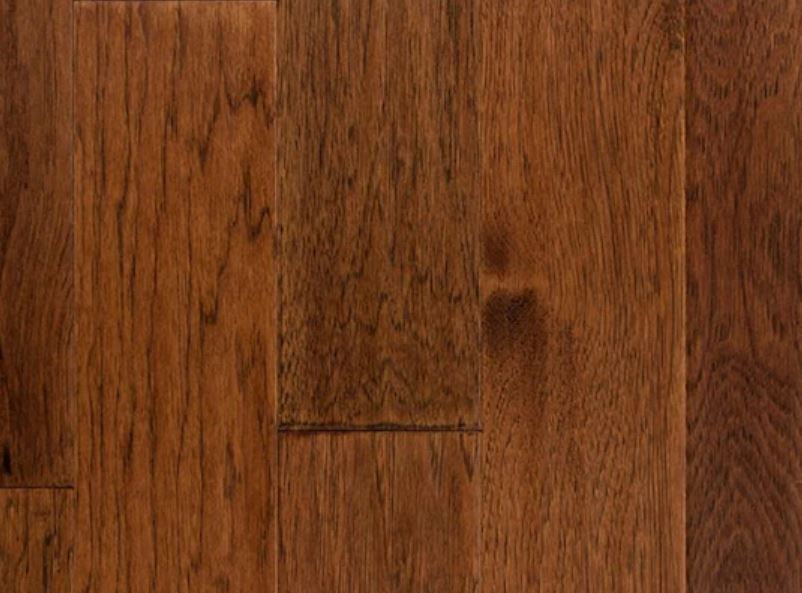
Hickory hardwoods carry some of the most inherent variations in coloring and grain, making it a desirable option for both modern and farmhouse designs. Hickory also scores high marks on the Janka scale, checking in around 1800.
Walnut

Walnut is one of the softest mass-produced hardwood on the market, checking in with a Janka score of around 1000. It is also one of the darkest woods, making it a desirable option for contemporary and traditional homes.
Bamboo
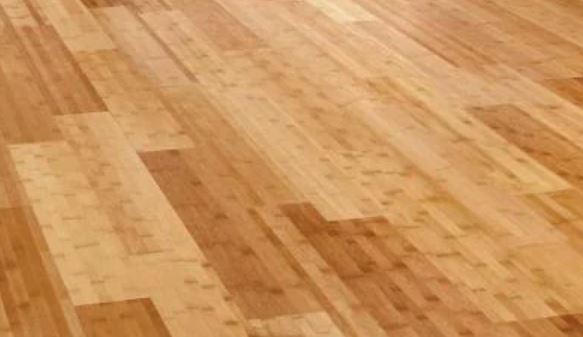
One of the top options for the sustainability-minded, bamboo flooring ranges from a 1600 score on the Janka scale to over 3000 for strand-woven varieties. Although technically not a wood (it is actually a grass/reed product), the high sustainability, hardness, and durability of bamboo make it a highly desirable option amongst homeowners and shoppers alike.
Cork
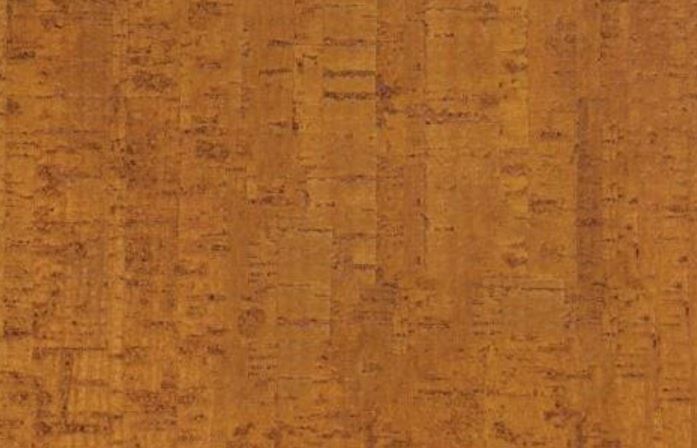
Another sustainable option for wood flooring is cork, which is cultivated from cork tree bark as opposed to the wood itself. Cork is one of the softest options available on the market, meaning it is much nicer to walk on with bare feet but is susceptible to dings and imperfections more so than harder woods. This softness can be offset by repeated sealant application, which needs to be done every couple of years to ensure the flooring stands the test of time.
Exotic Woods
Exotic, or put more simply, imported, woods tend to hail from the rainforests of Brazil and other areas of South America. Most exotic woods carry high scores on the Janka scale and are sought after options for their rich, dark appearance. Woods like teak and mahogany fall into this category, each scoring high on the Janka scale.
Types of Installation
How you install your new hardwood floors depends on numerous factors, including the existing base or subfloor, whether it will be installed above ground level or below, and how your flooring is designed to be installed.
All wood flooring is designed and manufactured to be installed in a specific way, but oftentimes variables like base level humidity and water tables in your area simply cannot be taken into account by the manufacturer.
These are important considerations to keep in mind due to the porous and hygroscopic (able to absorb water) nature of wood. For example, wood floors will expand slightly in the Spring and Fall in most areas of the country, when the ambient air is more saturated. Conversely, expect the wood planks to shrink in the summer and winter months when the ambient air is more arid.
For these reasons, it is a good idea to search for floating flooring in areas of the country with large seasonal changes in both humidity and temperature.
Regardless of the method of affixture, I highly recommend installing a two-in-one pad and vapor barrier prior to installing your wood flooring on each level of your home. This will cost you slightly more in price per square foot, but is well worth it for the time you will save on install and quality of padding.
One final note here: I recommend paying up for solid underlayment. Since water or moisture can transverse both wood (subfloor) and cement (slab), any leak, spills, or moisture build up underneath you wood floors can wreak havoc if you skimp on the vapor barrier.
PRO TIP: Be sure to move all hardwood into the area of the house where it will be installed and allow to sit for five to seven days. This gives the flooring time to adjust to ambient atmospheric conditions in your home.
Nail or Staple Down
Nail or staple down wood flooring is becoming more and more antiquated as technology advances. It is more cumbersome to install, it typically leaves gaps and surging in areas with large seasonal changes in humidity, and flooring that is nailed or stapled down is prone to creaking over time.
That said, wood flooring that is nailed or stapled down is the easiest to sand and refinish, a consideration for investment properties and rentals.
Glue Down
Glue down hardwood installation is a primary option on the bottom floor of homes built on a slab that also have low ceilings or issues with cabinet clearance. The reason is simple: some hardwoods are not manufactured with the ability to be installed floating and must be secured to the floor or subfloor. In homes with a concrete slab, you will need to install a vapor barrier and a subfloor in order to nail or staple hardwood down.
If your home has low ceilings or issues with cabinet clearance, you might not have the option to lose 1 1/2″ of space to a new subfloor. Glue down installation is your best bet.
Floating
Floating flooring locks together via the tongue and groove design and is allowed to expand and contract together as a single unit. When installing floating hardwood, be sure to leave 1/4″ gap around all walls to allow for this natural expansion and contraction through seasonal humidity changes.
If installed properly, floating flooring will leave less gapping and surging than nail down, staple down, or glue down hardwood. The opposite is true if you fail to leave 1/4″ gap around walls, as the flooring will separate as it expands and surge as it contracts during humidity changes as single boards get caught on the wall.
Finish Options
The finish options are where you can really alter the final look of the wood going in your home. Different stains, glosses, edgings, plank widths, and surface finishes give you the freedom to create a cohesive look that carries throughout the house.
Unfinished
Some manufacturers or retailers offer unfinished planks or even scrap planks and damaged boxes at discounts. It is difficult to piece together enough boxes of the same variation of flooring to complete an entire house, but oftentimes you can gather enough for a couple rooms or one floor. You just might be able to gather enough at a steep discount if you call around your area.
Some manufacturers also offer unfinished or unstained boxes that can be installed, stained, and then sealed. This could save you 10-30% on material costs, but if you aren’t doing it yourself, the additional labor costs will offset most of these savings.
Finished
The vast majority of product on the market comes already stained and sealed and ready for installation. I highly recommend visiting a show room to get eyes (and hands) on the product prior to ordering in bulk, as the $2-$10 per square foot adds up quickly if purchasing product for an entire house.
I also recommend taking sample boards home and seeing how the varying products interact with the rest of you home. It is best to place three of the same product together around the house to get the best idea of what it will look like when installed.
Plank Width
Plank width is primarily a design choice based on the rest of the home. Recent trends indicate a buyer emphasis and premium on wider planks, but realize most of these are priced higher than similar flooring in more narrow widths.
Edging Types
There are typically four different edging possibilities in wood flooring, but you don’t always have a choice unless paying for customized flooring.
Square edging appears to have no gap between planks and provides a vintage or traditional look. The other three types of edging, eased, bevelled, and kissed, create a negative space between planks that gives your flooring depth and texture.
Ultimately, it is up to you and your design for which edging you prefer.
Surface Finishes
Various surface finishes are also available, including distressed, smooth, wire-brushed, hand scraped, and antique. Smooth is self explanatory, with a smooth finish on top and uniform feel. The remaining options all offer varying levels of surface imperfections that add a bit of depth to your flooring.
Conclusion
The final consideration when choosing wood flooring is obviously price. I recommend visiting multiple showrooms and manufacturers to compare aesthetics to pricing before making your purchase. I also recommend doing a quick Google search once you have picked out a product to see if it is available cheaper anywhere online.
A lot of online flooring providers offer free shipping on bulk orders and oftentimes run various sales, meaning you might be able to find your desired product online for cheaper than you can in a brick-and-mortar store.
Finally, if installing the wood flooring yourself, set aside about an hour of labor time for every 50 square feet of home (yes, wood flooring installation is a tedious and grueling endeavor). As always, doing it yourself will save you about 30% on total project cost.

